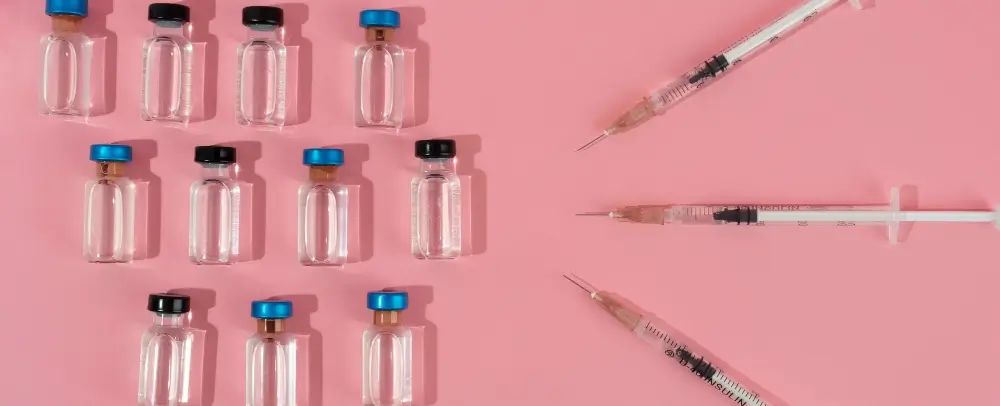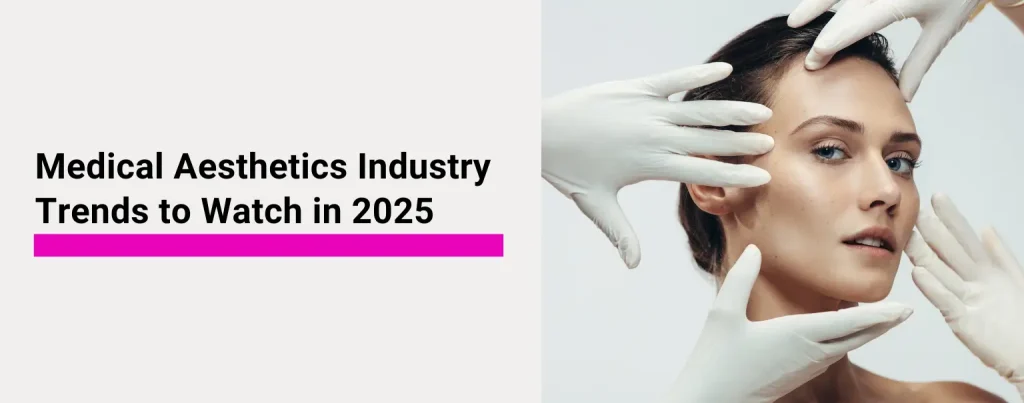The demand for non-surgical aesthetic treatments continues to rise. These mostly include injectables such as Botox and Dermal Fillers.
Their Purpose: To make people feel and look younger without invasive surgery!
However, both offer different benefits and address various facial skin concerns. This is why it is essential to learn their key differences before buying them in bulk for your Medspa in Toronto.
What Is the Difference Between Botox and Dermal Fillers?
As mentioned above, Botox and dermal fillers target aging signs, such as fine lines, wrinkles, and volume loss.
Botox is a neurotoxin that temporarily paralyzes muscles. It blocks the signals connecting the nerves to the muscles, preventing them from contracting. This helps reduce forehead lines, frown lines, and crow’s feet caused by repetitive facial expressions.
Dermal Fillers are gel-like substances injected into the skin to restore volume loss. They primarily target static facial wrinkles, even when the expressions are at rest. Dermal fillers are ideal for plumping the lips, cheeks and under-eye areas. They can also add fullness to hollowed cheeks.
What Are the Key Ingredients in Botox and Dermal Fillers?
Botox contains botulinum toxin type A, which temporarily inhibits muscle contraction. It blocks acetylcholine, a neurotransmitter that sends signals to muscles. Botox is diluted and purified for safe use in aesthetic procedures.
On the other hand, dermal fillers are made of various formulas. However, the one common ingredient that most of them contain is Hyaluronic Acid (HA). This substance occurs naturally in the body and helps the skin retain moisture.
Other dermal fillers with primary ingredients include poly-L-lactic acid (Sculptra®) and calcium hydroxylapatite (Radiesse®). These fillers stimulate collagen production, improving skin elasticity and texture. Compared to HA fillers, these are more long-lasting.
Are Botox and Dermal Fillers Safe to Use Together?
Most new Medspa owners are confused about whether to indulge in a patient’s request to get Botox and dermal fillers together. Hence, the question: Is getting both procedures safe?
The good news is that Botox and dermal fillers can be combined. In fact, experienced aestheticians recommend it. As far as safety is concerned, the mechanisms and ingredients of both do not interact with each other.
Which Is More in Demand – Botox or Dermal Fillers?
The market for botulinum toxin and dermal fillers is growing due to aging concerns, such as crow’s feet and lateral central lines on the face, and increased research and development efforts to expand the toxin’s therapeutic uses.
Because of its long-lasting effects and minimal discomfort and recovery time, botulinum toxin treatments are growing popular among facelift patients. Its low risk of side effects and ability to be administered multiple times yearly for best results have received positive comments. Throughout the forecast period, this factor is anticipated to propel the expansion of the botulinum toxin and dermal fillers markets.
People in their 30s and 40s often worry about how they look and want to appear younger. This is why there is a greater focus on aesthetics, especially in developed nations, which is driving the market expansion for botulinum toxin and dermal fillers.
CAGR of Botulinum Toxin and Dermal Fillers
- Throughout 2034, New Zealand and Australia are anticipated to grow at a CAGR of 8.6%.
- France is expected to grow at 8.6% CAGR until 2034.
- By 2034, the US will grow at a 7.5% CAGR.
- In 2024, the Canadian facial injectable market brought in USD 617.1 million. By 2030, it is projected to reach $1,068.5 million. From 2025 to 2030, the Canadian market is anticipated to expand at a CAGR of 9.7%. In 2024, the product that generated the highest revenue in terms of category was botulinum toxin type A.
What Clinics Need to Know Before Stocking Botox and Dermal Fillers
| Factor | What Clinics Need to Know | Botox | Dermal Fillers |
| Client Demographics | Understanding your target clients is essential. | Botox may be more popular among younger clients looking to prevent wrinkles, who are usually entering their 30s. | Dermal fillers may appeal to an older demographic or those with more noticeable volume loss. |
| Product Quality | Always prioritize reputable brands with FDA approval for safety and effectiveness. | Botox is a trusted brand, but other neurotoxins, such as Dysport® or Xeomin®, should also be considered. | For dermal fillers, trusted brands like Juvéderm® and Restylane® are known for their safety and efficacy. |
| Training and Expertise | Ensure that your staff is properly trained to administer Botox and dermal fillers. | To minimize the risk of complications, injectables should only be performed by qualified professionals. | To minimize the risk of complications, injectables should only be performed by qualified professionals. |
| Pricing and Profitability | ROI based on units used. | Botox have a lower cost per unit than dermal fillers. | Dermal fillers offer a higher profit margin due to the required volume for specific treatments. |
In conclusion, purchasing Botulinum Toxin and Dermal Fillers in bulk is a wise move for practitioners in the medical field as well as the cosmetics business. While upholding the greatest safety and quality standards, it provides cost savings, a steady supply, and the possibility of higher earnings.
If you want to offer your clients top-quality Botox and dermal fillers, Aesthetics Depot is here to support your Medspa’s needs. With our premium products, we can help you provide safe and effective aesthetic treatments that deliver outstanding results. Contact us today at 647-800-7945 to learn more about how we can help elevate your practice. For any sales-related queries, email sales@aestheticsdepot.ca.



